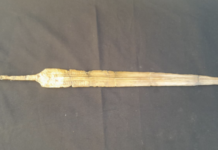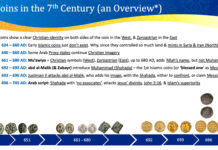Evidence of the book eluded scholars, until now

The celebrated Dead Sea Scrolls, first discovered in 1948 in the caves adjacent to the ancient site of Khirbet Qumran near the Dead Sea, are known to represent the earliest known texts of almost every book of the Hebrew Bible, except for two — the Book of Esther and the Book of Nehemiah. Now, a Norwegian Dead Sea Scroll scholar has announced his discovery of a fragment of Nehemiah.
Working together with Esther Eshel of Bar-Ilan University, Torleif Elgvin of Evangelical Lutheran University College in Oslo, Norway, has been examining previously unknown fragments from 29 scrolls (including scraps of four others). The fragments include that of Nehemiah for the first time, textual variations of Genesis, Exodus, Leviticus, Deuteronomy, 1 Samuel, 2 Samuel, Ruth, Proverbs, and the Twelve; a fragment from an unknown Enoch-related text and two new copies of 1 Enoch; and a new copy of a sectarian biblical commentary. Most of these fragments were found decades ago in “Cave 4” near the Dead Sea, but several were found at the Bar Kokhba caves and some small fragments were originally discovered at Wadi el-Daliyeh, a valley fourteen kilometres north of Jericho.
States Elgvin in his blog, News from the SchØyen Collection, “some of the biblical fragments shed new light on the textual and literary development of books in the Hebrew Bible”.
The Dead Sea Scrolls total a collection of 972 ancient texts, written mostly on fragments of parchment and some papyrus. Various scrolls and scroll fragments were found between 1947 and 1956 in a series of caves near the Dead Sea. Representing books from the Hebrew Bible and other extra-biblical texts, they have great historical and religious significance not only because they include the earliest known surviving copies of Biblical and extra-biblical documents, but because they have opened a window on understanding the immense diversity of late Second Temple Judaism. They are written in Hebrew, Aramaic and Greek, and date between 150 BCE and 70 CE. Carbon dating, however, indicates the range may extend to the third century BCE.
The new findings will be published in an upcoming book, Gleanings from the Caves, which will also feature photos and text about Dead Sea Scroll-related artifacts such as an inkwell, a palm fiber pen, a scroll jar and a bronze altar. — Popular Archaeology



